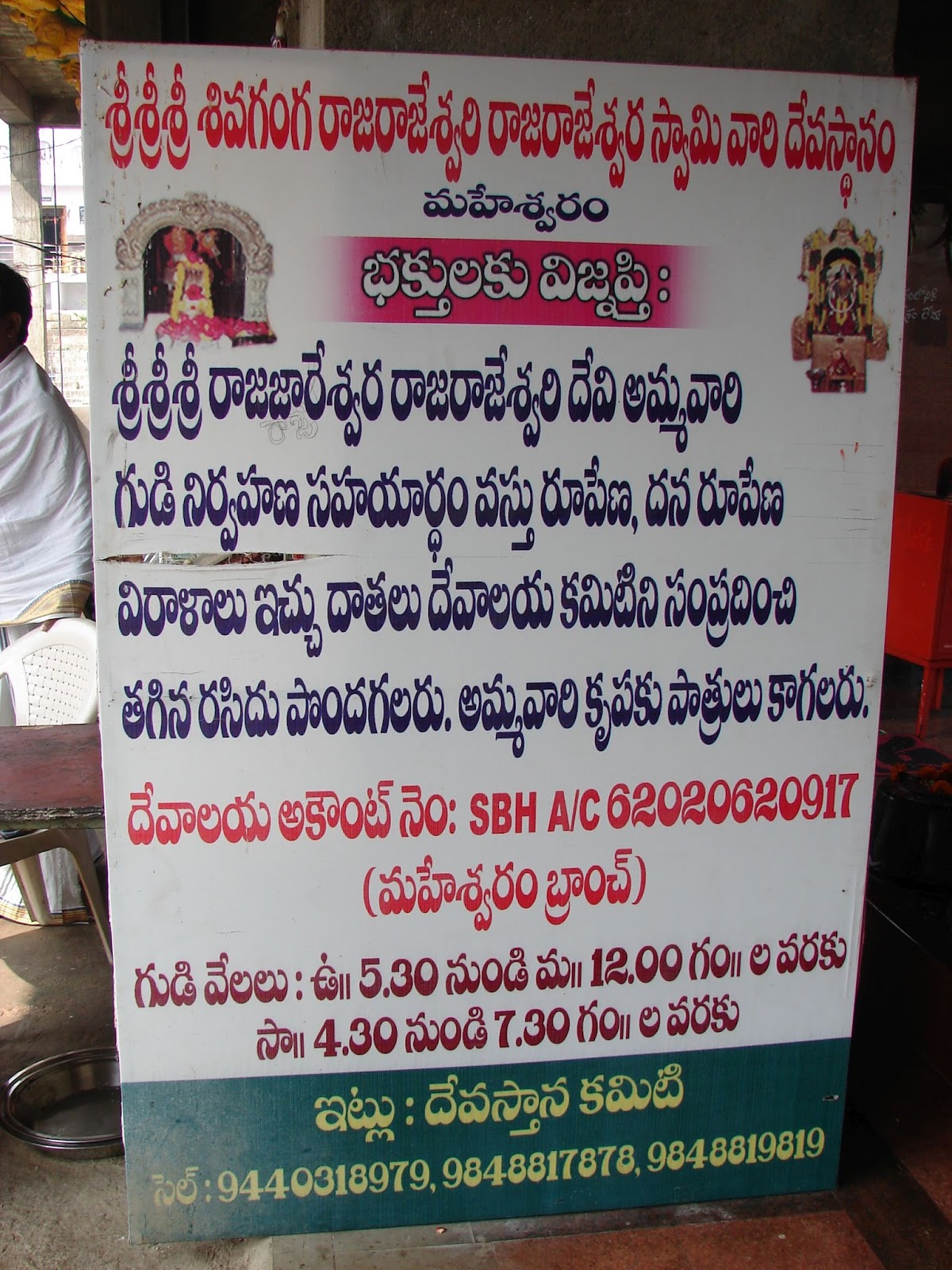Sri Sri Sri Shivaganga Rajeshwari Rajarajaeshwara Swamy Temple
at Maheshwaram, 57 km from Secunderabad is a very ancient Temple. It is about
20 km from Hyderabad’s RGI Airport, along Srisailam highway. It is a Temple of
Lord Shiva and Goddess Parvathi Devi. The village got its name after the
Temple. Maheshwaram means Maha Eashwara that is Almighty Shiva. The Temple is
said to be constructed about 1000 years ago by King Ganapathi Deva of the
Kakatiya dynasty. This is according to the inscriptions found on the sculptures
at the Temple. However, the history of the Temple thereafter is vague. In 1672
it was found in ruins by two brothers Akkanna and Madanna. Akkanna and Madanna
were in very powerful positions in the court of, Abul Hasan Qutub Shah Ruler of
Golconda (more popularly known as Tanisha). Akkanna and Madanna are remembered
even today for the loyalty and service they rendered to their king and for the
various constructions around Hyderabad, of forts, buildings and Temples. The renovation of the Temple took eight
years. It is said that in 1677 while the Temple was under renovation Shivaji,
the great Maratha King visited this Temple; he was actually on his way to Sri
Mallikarjuna Swamy Temple at Srisailam.
A few years later the Temple was destroyed by the troops of the
Mogul King Aurangzeb. Then its history if full of up and downs. The present
main Archaka Sri Veeresham Panthulu of Maheshwaram is with the Temple for the last
22 years. He along with some locals and prominent people are; and have been
striving to develop and upkeep the Temple.
Everyday rituals and festivals like Maha Shivaratri and Karthika Masam
festivities are performed in a befitting manner. Tomorrow is Karthika Pournami
and we could see large scale arrangements being made to celebrate the festival.
Some unique and extraordinary facts of the Temple are as
follows:
The Temple is located at the centre of the Pushkarini that is
Temple Pond/Tank, with an approach way over the water. Normally the Temple
Ponds are adjacent to Temples. Here the Temple Pond is called Shivaganga.
Shivaganga has steps on all four sides for devotees to reach the water. Just
sprinkling Shivaganga water over the head is said to purify that person and
wash off all his sins.
This is a two-storey Temple. Goddess Rajeshwari Temple is just
above Shivaganga and above it is the Temple of Lord Shiva known here as Sri
Rajarajeshwara Swamy. The Shiva Lingam consecrated here is a naturally formed
one from River Narmada. It is very beautiful; it is a two-toned Lingam, light
brown with a large dark brown crescent having ash (Vibuthi) streaks. The
sanctum sanctorum has entry doors on all four sides. The original Temple is on
rock pillars, it still is, but as the Temple area had to be expanded it is now
additionally supported with some reinforced concrete pillars.
Just along the boundary of the Pushkarini, along its four sides
are sixteen small Shiva Temples situated in all cardinal directions. These 16
small Temples are known by different names of Lord Shiva. This layout makes the
Temple very unique and the Temple is called as one constructed with Shodashanga
Roudrikaranam.
In front of the Temple is a huge tree, it appears as a single
tree but it is a combination of three trees, Peepal, Neem and Udumbara/Gular
(Raavi, Vepa and Medi Chettu). Under this three-trees-combination is a Temple
of Naga Raju – Snake God. It is believed that if a childless couple prays here
for a child and wraps a coconut in cloth and ties it to a branch, their wish
would be fulfilled soon.
I hope the attached pictures will reinforce my description of this ancient and important Temple.


























No comments:
Post a Comment